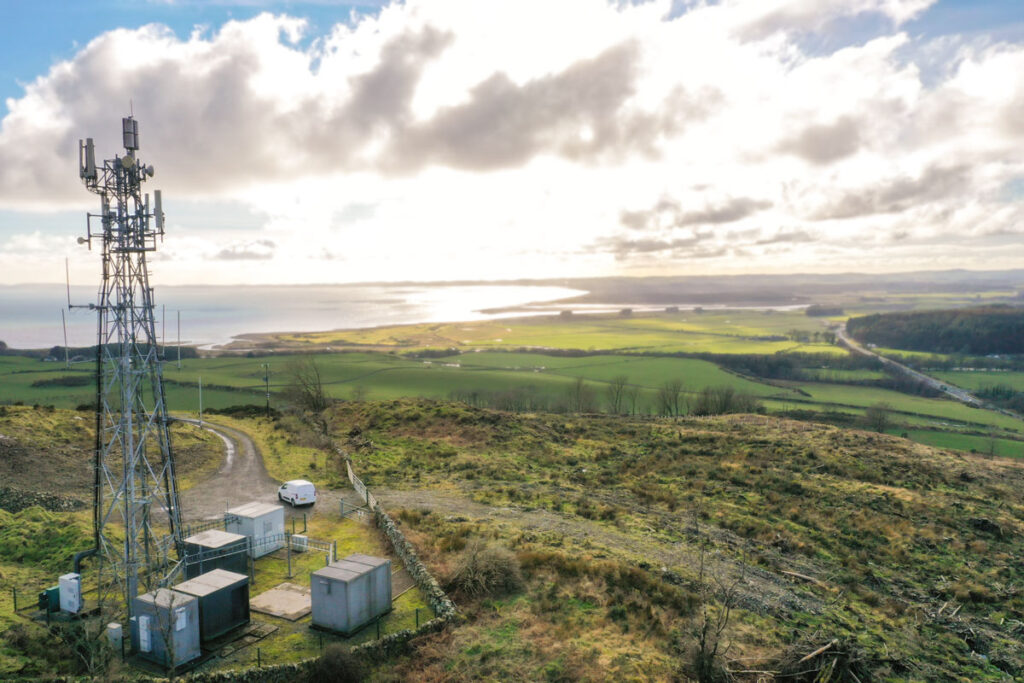
Table of Contents
What is a cell tower?
Cell towers, alternatively referred to as telecoms sites or phone masts, are structures that house electrical communications equipment and antennae, enabling the surrounding region to use wireless communication devices such as mobile phones and radios. Some mobile masts also have powerful broadcasting towers that broadcast our television signal. They also play a major role in connecting the network as a whole all together so that data is delivered uninterrupted and with minimal delay.
Facts about the UK Telecoms Industry
Here are some surprising facts you may not know about the telecoms industry in the UK…
- The telecoms industry generated revenue amounting to more than 31 billion British Pounds in 2020.
- Globally, 2.5 quintillion bytes of data was created each day (2018). By 2025, it’s estimated that 463 exabytes of data will be created each day globally. To put it in to perspective, a petabyte is the equivalent of watching the entire series set of Game of Thrones 1,212 times. There are 1,000 petabytes in an exabyte, so 463 exabytes is the equivalent of watching all of Game Of Thrones 561 million times… in just one day!
- As of 2016, there were around 53,000 mobile phone masts in the UK.
- In 2019, there were 80.97 million mobile subscriptions in the UK, across the entire population of 66.8 million inhabitants.
- The biggest telecoms companies in the UK are: O2 which holds 26% and BT, which holds 28%. Vodafone, Three, EE, T-Mobileand O2 are the five Major Mobile Network Operators (MNO’s).
Mobile phone masts are typically constructed by a tower business or a wireless carrier company as part of an expansion of their network coverage or capacity. Cell towers are virtually ubiquitous throughout the United Kingdom, they can be seen everywhere! However, some areas have a greater density of them. The higher the population and the more buildings and other obstacles there are, the more antennas you will come across.
Types of Telecoms Sites
There are three different types of telecoms sites: Greenfield, Streetworks and Rooftops. Our team here at UK Air Comms is fully trained, equipped, licensed and insured to carry out surveys and digital twins on all types of sites throughout the UK. We carry a special drone operator’s licence that allows us to operate in areas of high risk, such as heavily built-up areas and even busy airports.
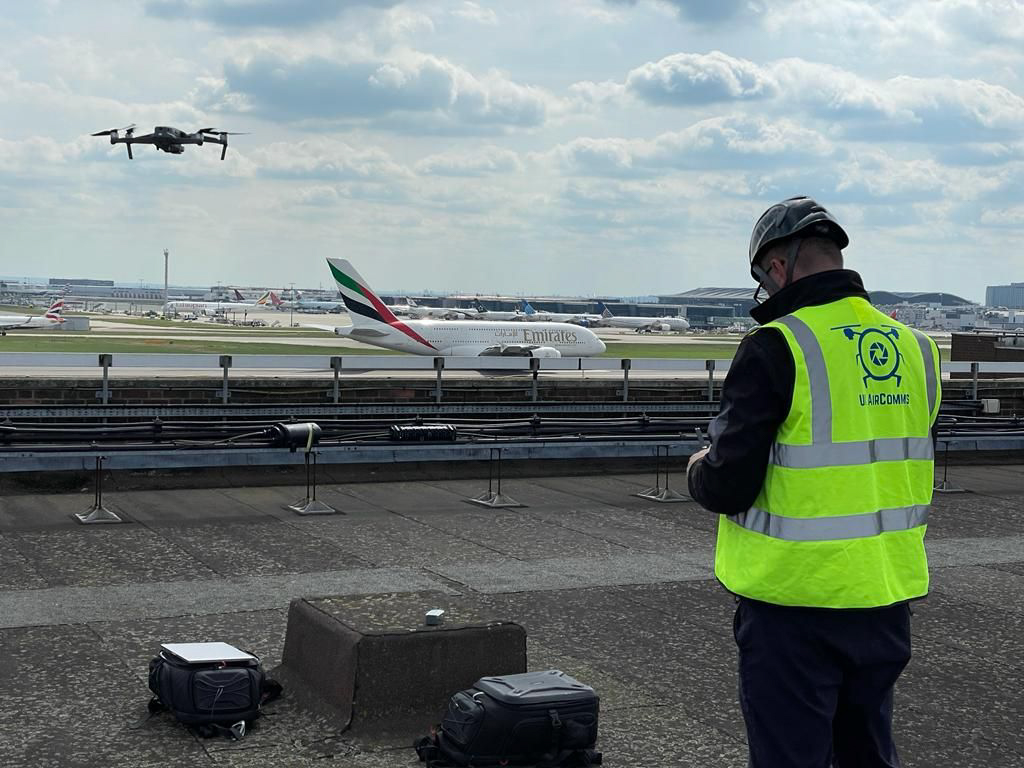
Greenfield Site
Greenfield telecom sites are the tall towers you usually find in rural and remote areas. Sites that are located on industrial sites with tall lattice towers are also classified as greenfield sites. These sites include a ground area which is guarded by a perimeter fence and access is heavily restricted. Capturing digital twins of greenfield sites doesn’t pose a problem for UK Air Comms despite the fact that sometimes, it can prove to be an arduous task having to contact multiple keyholders and landowners for permission and access. Our pilots sometimes even have to trek on foot with their drones and other imaging equipment to reach them!
One of the issues we come across quite often with greenfield sites is fallen trees and overgrown vegetation. UK Air Comms are able to arrange the clearance of overgrown telecoms sites and the removal of fallen trees. We offer a tree clearance service with specialist arborists who are able to deal with fallen trees and overgrown mobile phone mast sites throughout the UK. Read more about our vegetation management service for the telecoms industry here.
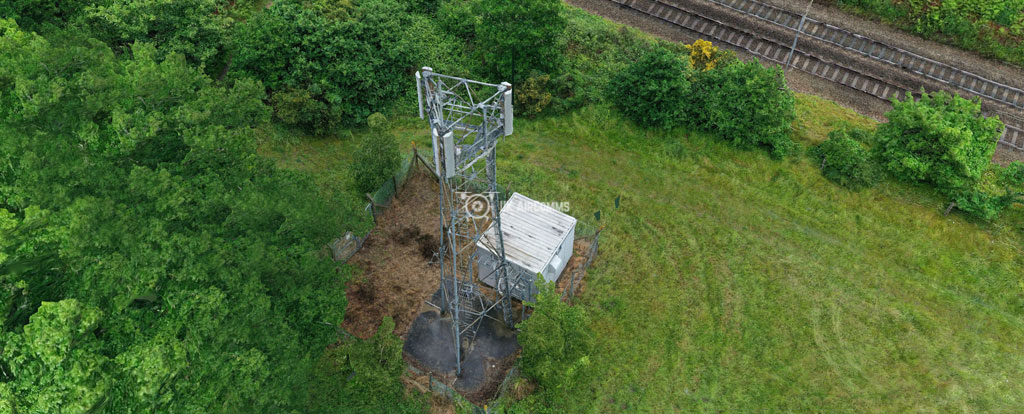
Streetworks Site
Cell towers located on the side of the road are called Streetworks Sites. These usually consist of a monopole, as pictured below; cabinets containing the transmission equipment, and a meter cabinet.
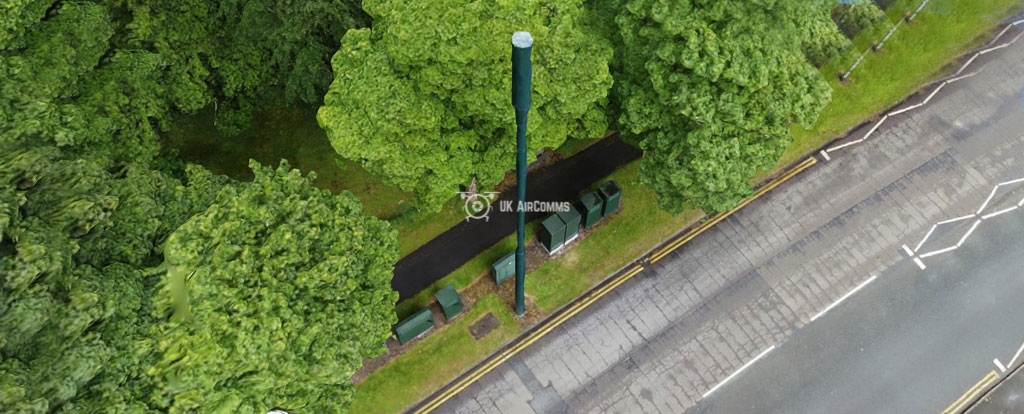
Rooftop Site
Rooftops make ideal locations to place mobile antennas to enable mobile coverage for populated areas. Look at the tallest building in a town or city, and you will most likely notice telecoms antennas! In order for us to be able to survey telecommunication equipment on rooftops, our drone operators must have special licences and qualifications, including Rooftop Safety and First Aid at Height. UK Air Comms operate with a special drone licence issued by the CAA that enables us to work within 50 meters of built-up areas.
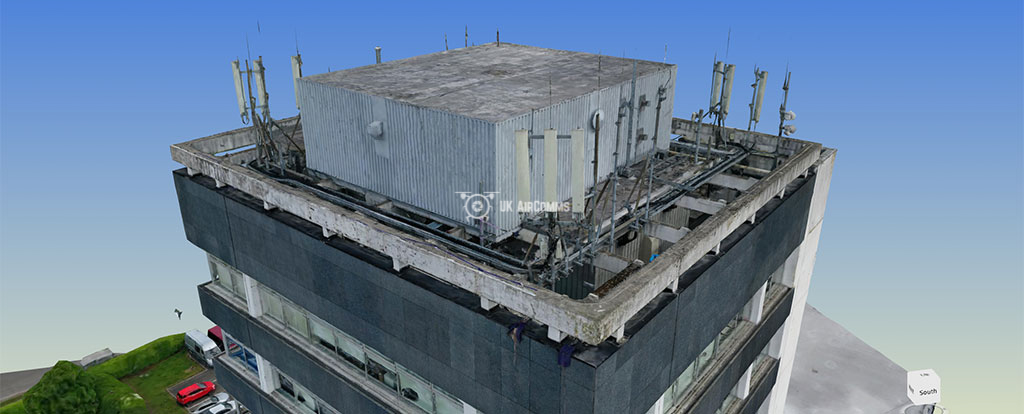
What is Inside a Phone Mast Site?
So what equipment is needed in a phone mast site for it to be able to transmit all that data? Below you will find a comprehensive list of all the gizmos and gadgets found on a typical cell tower site.
The Tower
Obviously, the most prominent part of any telecoms site is the tower. See below all the different equipment you would find on a typical cell tower.
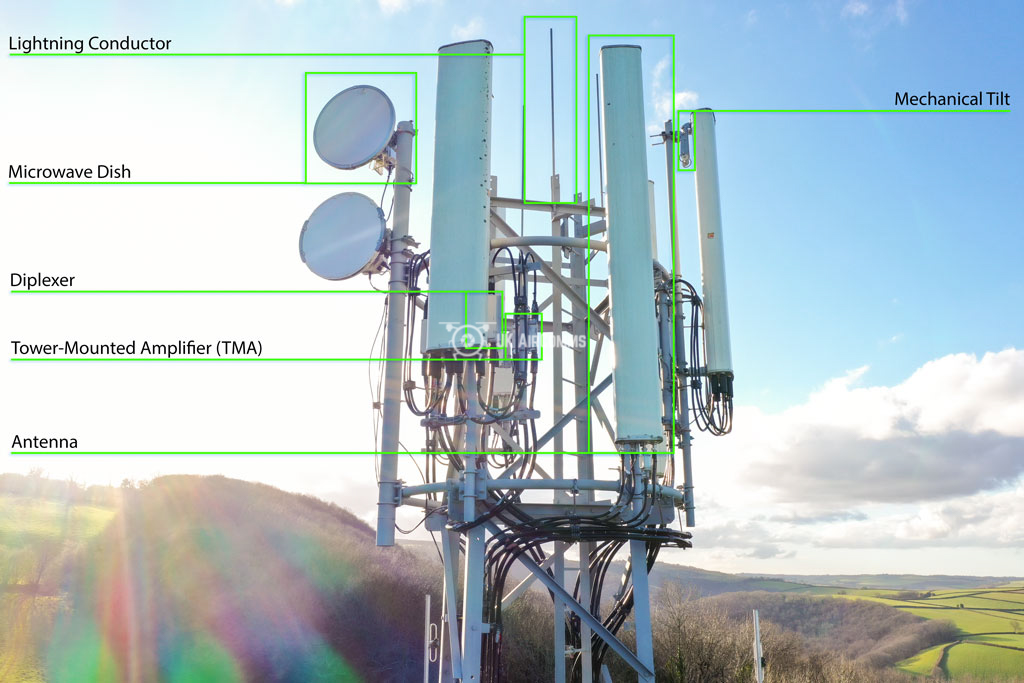
The Ground
Below are drone shots of sites surrounding various types of cell towers.
The Cabin
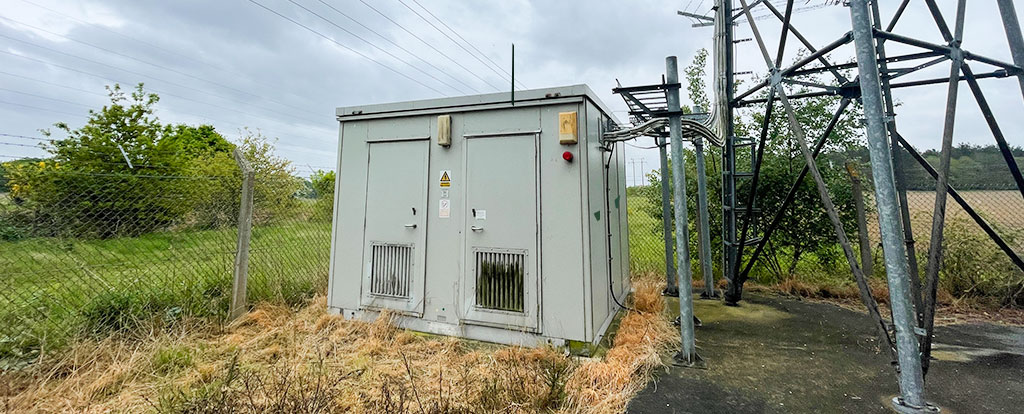
Glossary of terms
Typically found in built-up areas, rooftop sites have antennas to broadcast the mobile signal and act as a “hop” to other hubs.
The name we give mobile phone mast sites that are in rural locations, usually fenced off with a perimeter fence.
Cell tower sites along the side of roads, usually equipped with a monopole antenna and cabinets containing the power supply and meter and broadcasting equipment.
At the top of most antennas is a lightning rod. This is connected to the ground via grounding strips so that the electrical surge from a lightning strike is diverted to the ground rather than through the equipment or anyone on the site!
The dish is the piece of equipment that sends and receives the data to and from other cell towers. Not to be confused with the antenna which broadcasts the signals to users.
The term used to describe the head frame on which the dishes and antennas are mounted. Some towers are strong enough to hold numerous headframes.
A diplexer is a passive (RF) filter component having three ports that allows two separate frequency bands to share a single antenna. This technology enables transmitters running on various frequencies to share the same antenna, allowing each band to transmit and receive at the same time.
A tower mounted amplifier is an electronic low-noise amplifier that is positioned near the antenna on a telecom tower, also known as a base transceiver station.
The amplifier’s primary function is to lower noise levels, hence improving the overall sensitivity of the base transceiver station.
Antennas are an essential part of radio telecommunications equipment, bridging the gap between electronic and electromagnetic signals. They transmit the data in to radio signals which is how the mobile signal is broadcast from towers.
The mechanical tilt attached to the headframe holding the antenna can be manually altered and even remotely altered to change the angle at which the antenna broadcasts the signal.
A very important part of any cabin or cabinette – it allows cables to be run from outside to inside and preventing the elements from entering the cabin. They usually have many ports so that the cables can be added and removed easily.
The quadruplex telegraph is a form of electrical telegraph that allows for the simultaneous transmission and reception of four distinct signals on a single cable (two signals in each direction).
